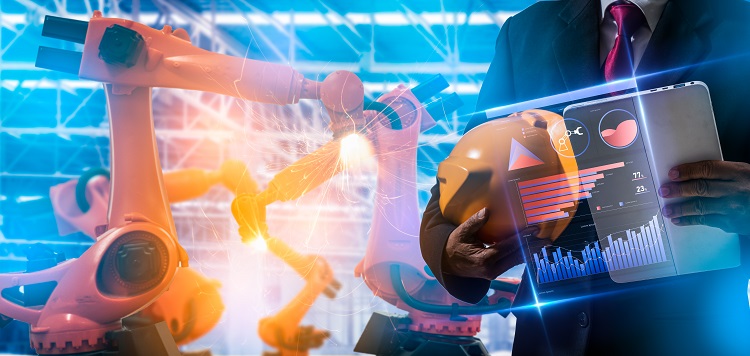In today’s fast-paced manufacturing industry, the ability to maintain high-quality standards and reduce waste is critical. Companies must continually innovate to stay ahead of the competition, and technological advancements are driving that innovation. From AI-powered platforms to advanced metrology equipment, the manufacturing industry is embracing new tools and techniques to ensure that products meet and exceed customer expectations.
Vanti’s AI-powered Predictive Quality Platform
Vanti, a leader in industrial automation and analytics, has announced the introduction of its AI-powered Predictive Quality platform for adaptive industrial applications at the Gartner Data & Analytics Summit in 2023. This platform uses machine learning and data to predict when and where quality issues may arise in a manufacturing process, effectively reducing waste and increasing efficiency.
The platform analyzes data from multiple sources, including sensor data, historical production data, and external data sources, such as weather conditions, market trends, and supplier data. The AI algorithms then use this data to predict potential quality issues and alert production teams to take corrective action before the issue occurs.
One of the key benefits of the Predictive Quality platform is its ability to adapt to changing manufacturing processes. As production lines evolve, the platform can learn from new data and adjust its predictions accordingly, ensuring that quality control remains a priority.
Limitations of Laser Processing Machines
While laser processing machines can cut extremely complicated shapes, they are typically limited to working in two dimensions. This can be a challenge for manufacturers seeking precise three-dimensional cuts, particularly in complex geometries.
To overcome this limitation, researchers are exploring the use of new laser technologies, including beam shaping and ultrafast lasers. These technologies enable the cutting of more complex three-dimensional shapes, opening up new possibilities for manufacturing applications.
Kenso Software’s KensoBI Version 2
Kenso Software, a provider of business intelligence and analytics solutions, has announced the release of KensoBI version 2 into production. With this latest release, Kenso Software has made significant upgrades to its system, including enhanced data visualization and improved data modeling capabilities.
KensoBI version 2 also has advanced reporting features, including automated report creation and distribution, making it easier for companies to gain insights from their data. The system’s enhanced security features ensure that sensitive data is protected, giving companies peace of mind when utilizing the platform.
P.E.L Pintossi’s quality production processes
At its factory in Sarezzo, Italy, P.E.L Pintossi produces a wide range of components for industries and carries out numerous processes with increasingly higher quality standards. The company’s focus on quality control has helped it achieve success in the industry, earning a reputation for delivering reliable and high-quality products.
P.E.L Pintossi utilizes advanced technologies such as 3D printing and robotic automation to streamline its production processes while maintaining quality control. The company’s investment in advanced manufacturing technologies has allowed it to remain competitive in a crowded market.
Mahr’s use of MarForm MMQ 400-2
When Mahr learned about the specific requirements of aircraft engine gears for measurement data, the company used MarForm MMQ 400-2 for automated evaluation of roundness and roughness parameters in a single measuring run. The use of MarForm MMQ 400-2 allowed Mahr to identify quality issues quickly and take corrective actions before those issues resulted in product defects.
Mahr’s focus on precision metrology has helped it become a leader in the industry, offering a range of high-quality products that are trusted by customers worldwide.
Teledyne’s Sapera Vision Software Edition 2023.03
Teledyne, a leading provider of advanced imaging and sensor solutions, has announced that its Sapera Vision Software Edition 2023-03 is now available. This new software edition includes advanced features such as deep learning-based object detection and classification, making it an ideal solution for manufacturers seeking to enhance their quality control processes.
The new software also includes improved support for high-resolution cameras, enabling more detailed and accurate image capture. Teledyne’s commitment to innovation and quality has made it a trusted partner for manufacturers across a range of industries.
GT Tooling’s upgraded metrology equipment
The toolmaking and subcontract machining company, GT Tooling, spent a year using conventional manual metrology equipment to measure the components it was milling and turning before investing in a portable arm coordinate measuring machine (CMM). The new equipment has allowed the company to achieve more precise measurements in less time, reducing the risk of errors and improving quality control.
GT Tooling’s investment in advanced metrology equipment is an example of how manufacturers are embracing new technologies to enhance their processes and improve quality control. This commitment to innovation will be critical for companies that seek to remain competitive in today’s fast-paced manufacturing landscape.
Artificial intelligence, advanced metrology equipment, and other manufacturing technologies are revolutionizing quality control, allowing companies to reduce waste, increase efficiency, and maintain high standards of product quality. As the manufacturing industry continues to evolve, these technologies will play an increasingly important role in helping companies stay ahead of the competition and meet the changing needs of their customers.

